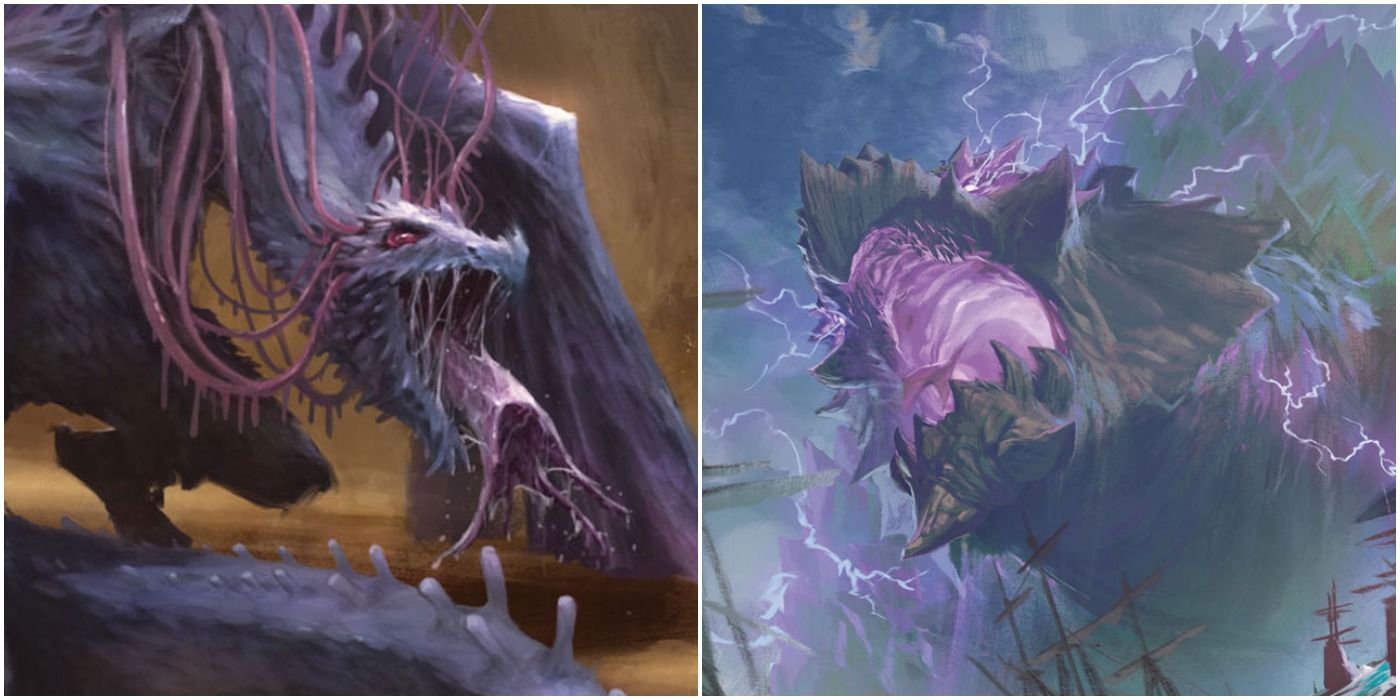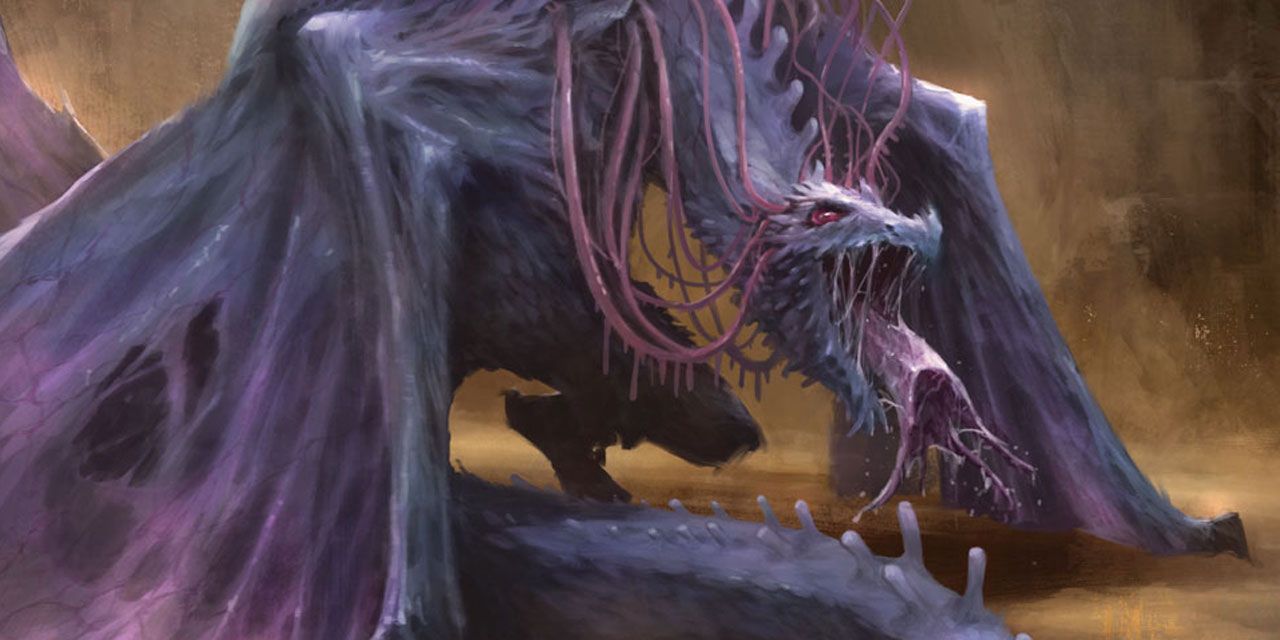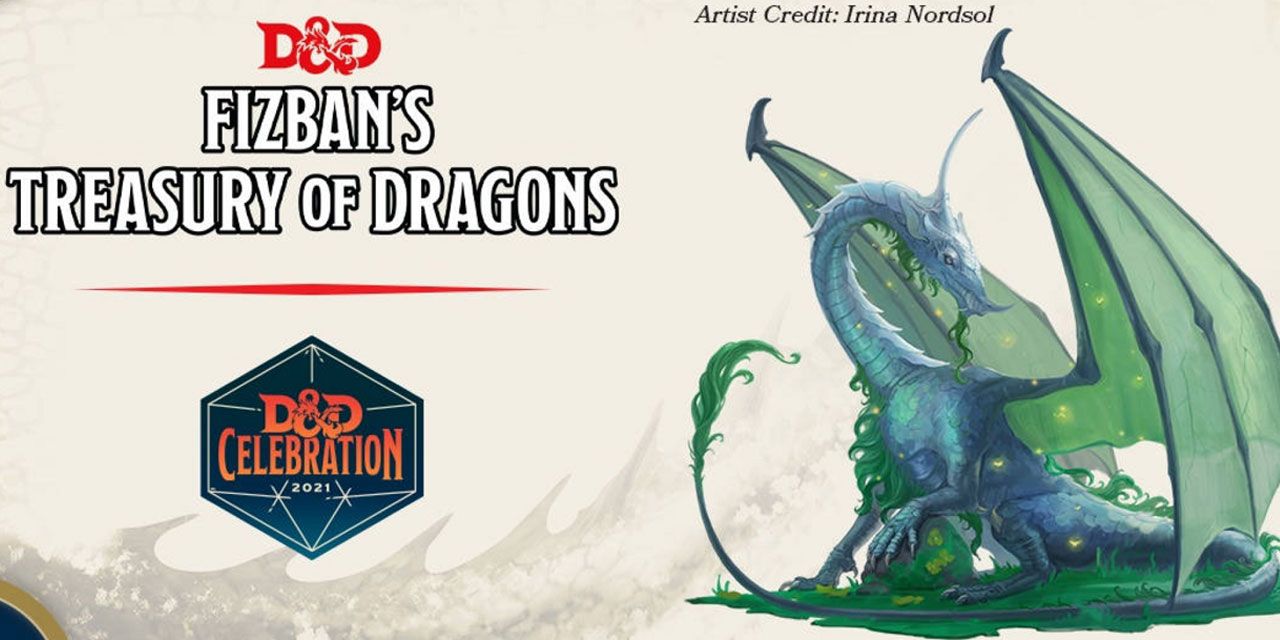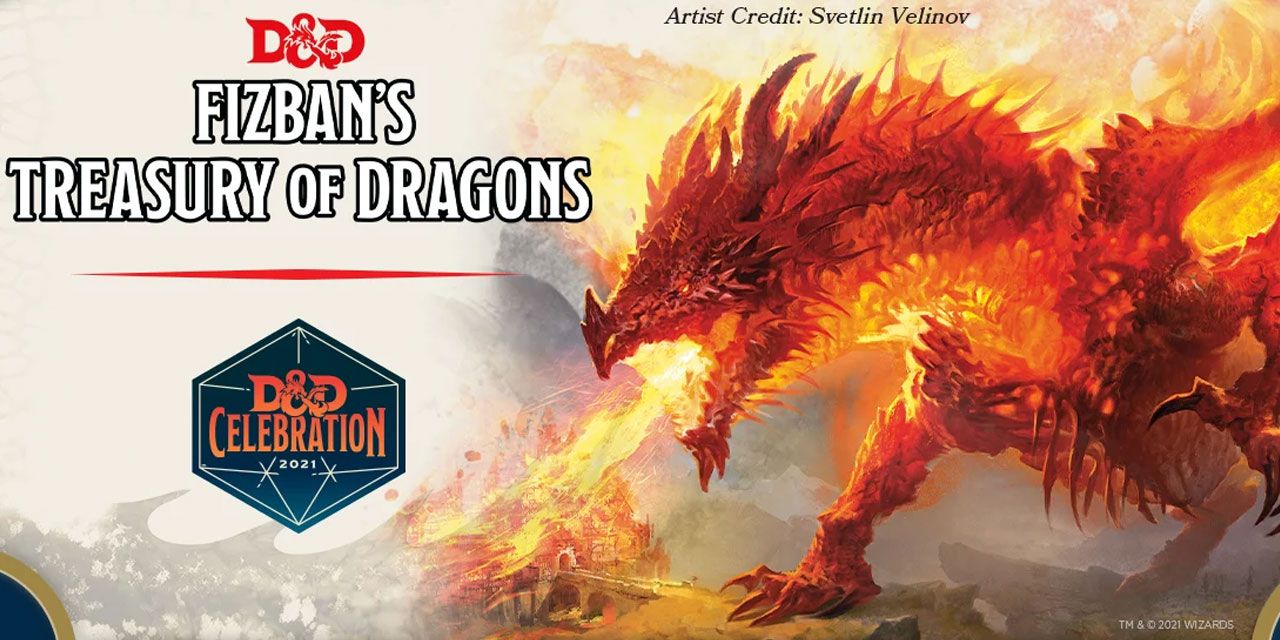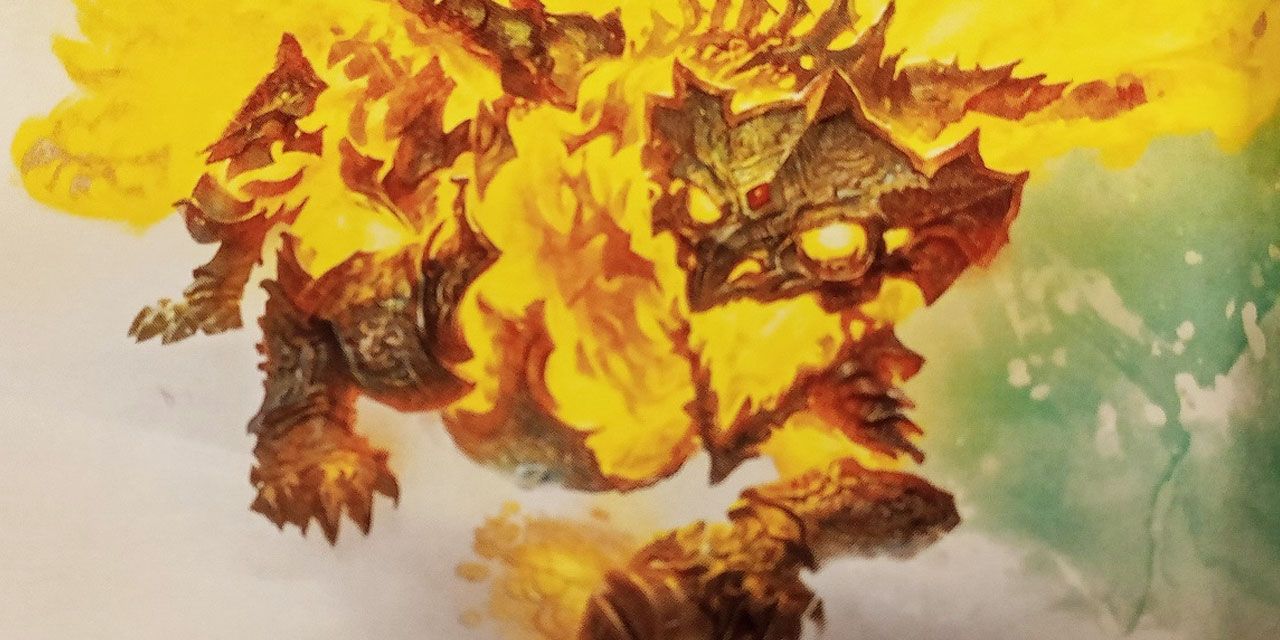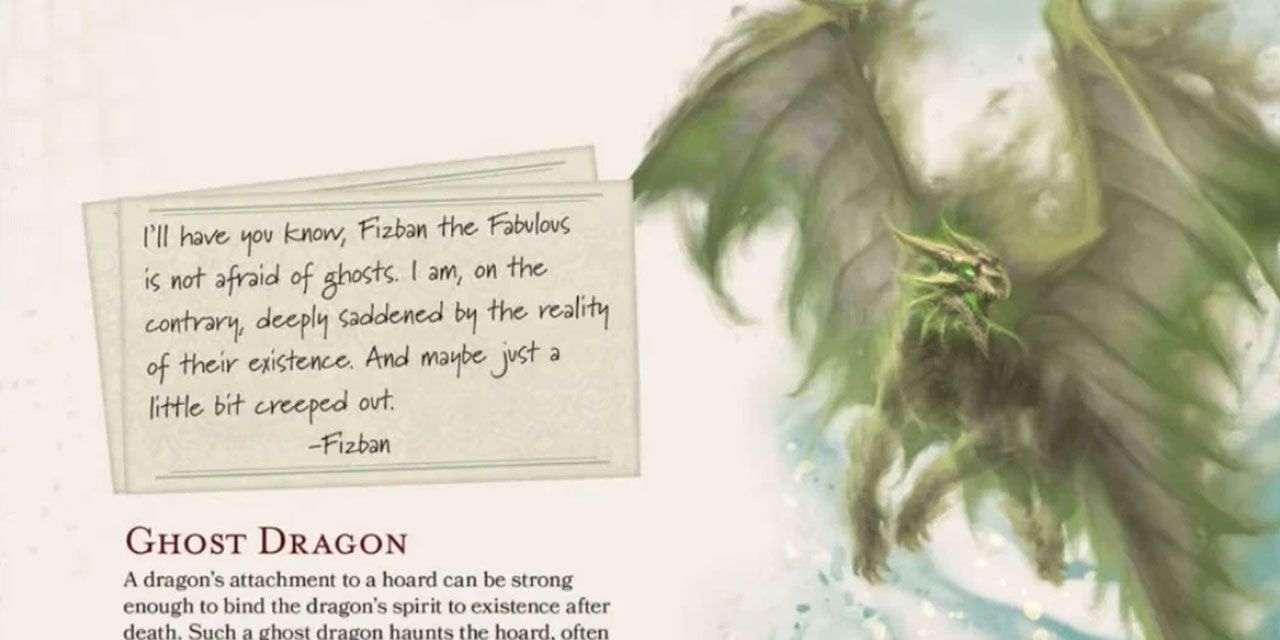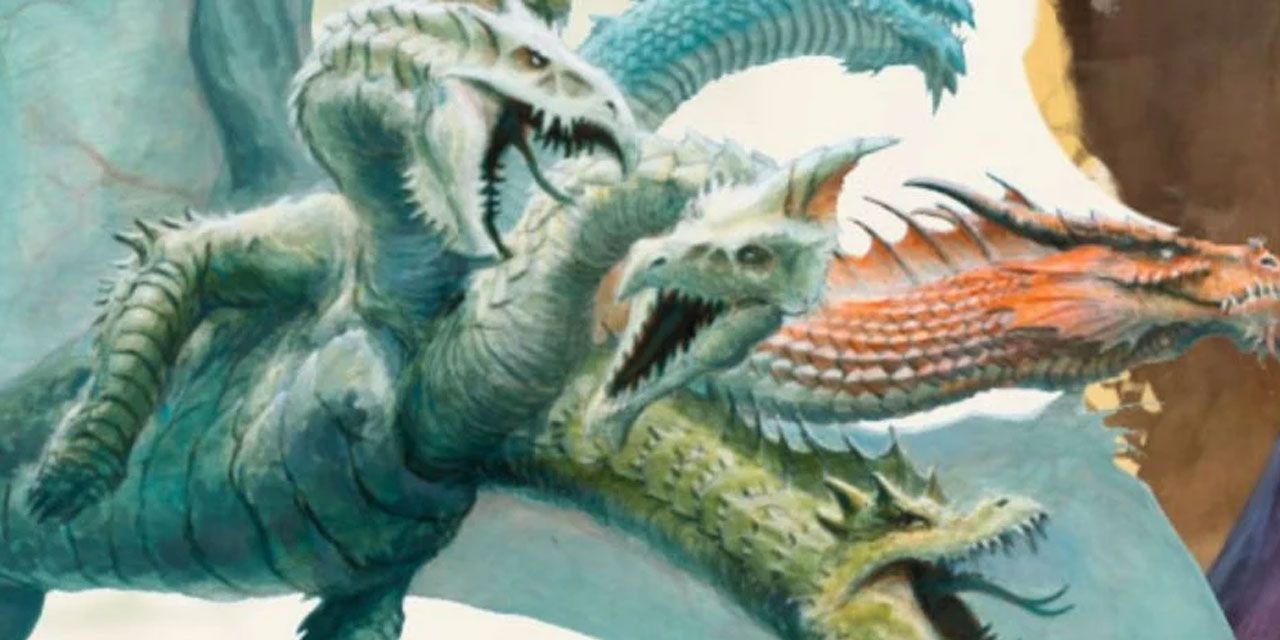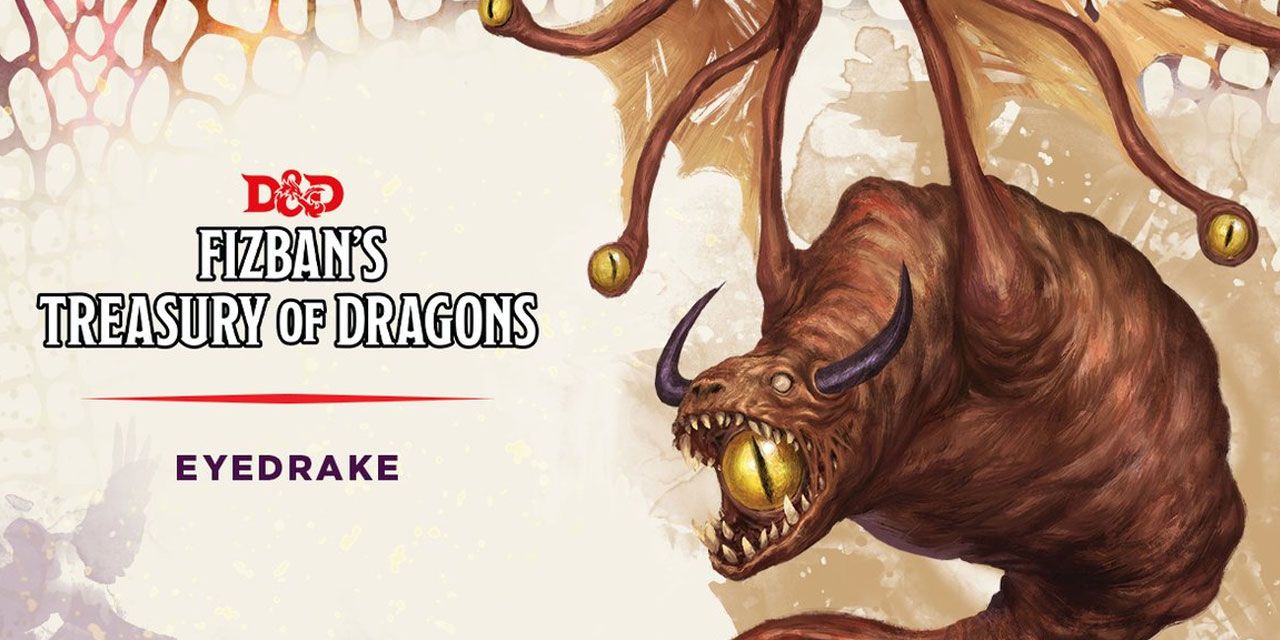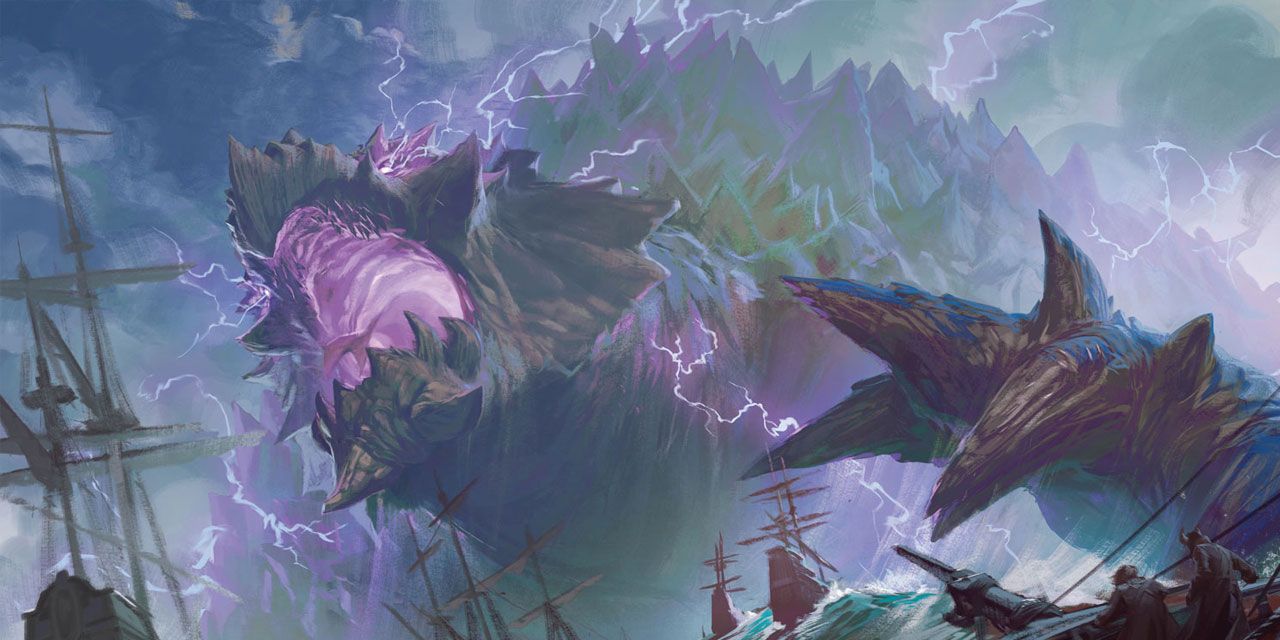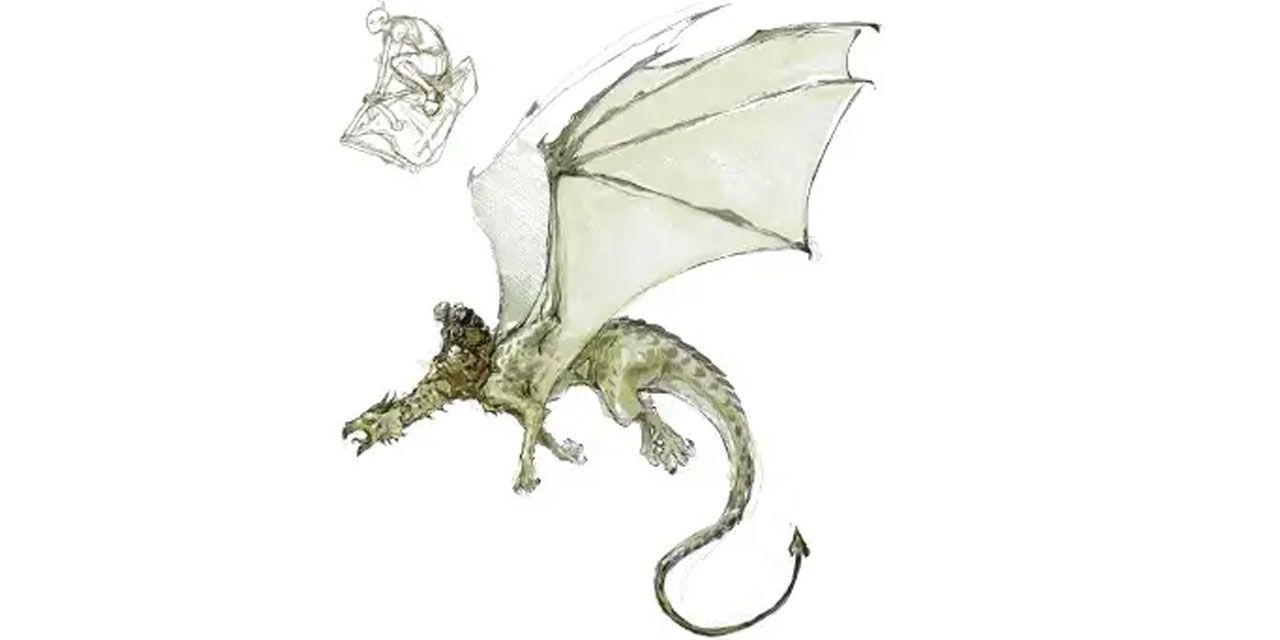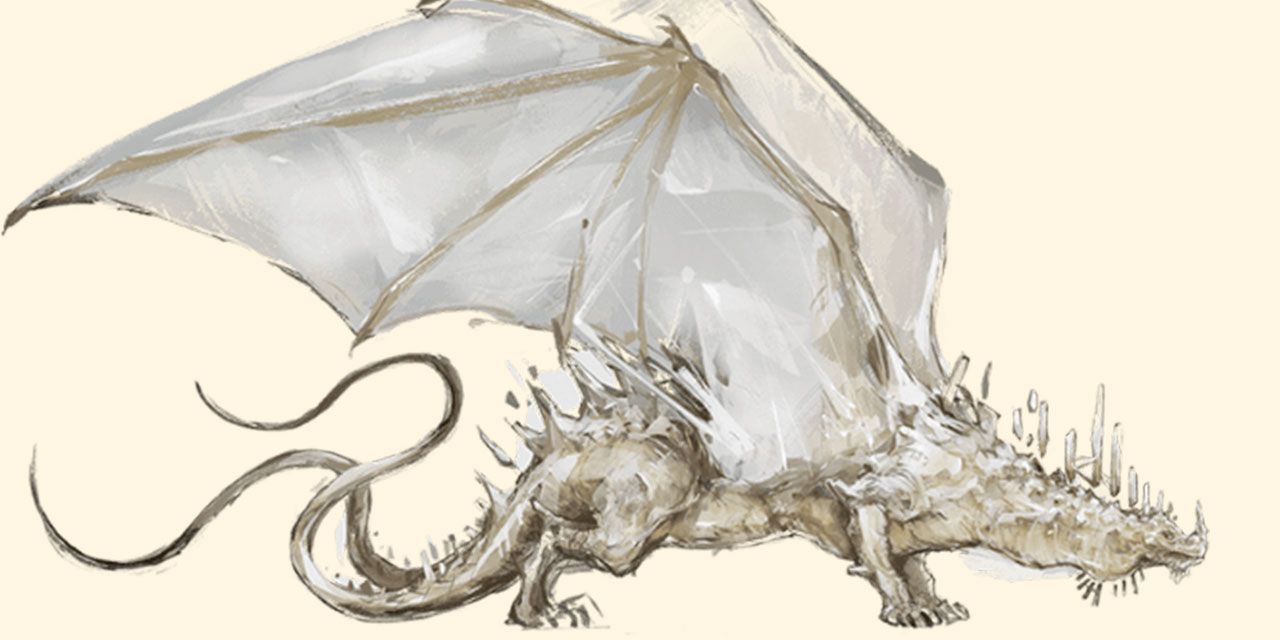Fizban the Fabulous is an archmage and hero of the War of the Lance, who in the newest Dungeons & Dragons sourcebook guides players through the mysteries of dragonkind. Fizban’s Treasury of Dragons introduces a lot of unique, exciting lore to D&D.
The sourcebook is full of tips and tools for Dungeon Masters and players alike, and includes a variety of new dragons and dragon-related creatures. The book adds new player character options, from draconic ancestries for Dragonborn to dragon-themed subclasses for monks and rangers. Of course, in addition to this, there are over 50 stat blocks included for the various new dragon-related entries. With so many new and revised dragons, some stand out more than others.
10 Elder Brain Dragon
Mindflayers are fearsome opponents, especially if players are unlucky enough to cross paths with an entire colony. Despite their power, they can only travel so far away from the elder brain for that colony can have influence. However, if Mindflayers are able to capture a dragon, the elder brain can latch onto the dragon’s back. The brain forces the dragon to undergo a gruesome transformation, creating an Elder Brain Dragon.
This means Mindflayer colonies can become mobile threats, so long as the Elder Brain Dragon is able to move. In addition to the colony of Mindflayers, players would have to battle the dragon itself, pulsing with psionic power. The Elder Brain Dragon’s breath weapon is possibly the most terrifying aspect of the creature, as it is made of a briny liquid full of illithid tadpoles.
9 Moonstone Dragon
Moonstone Dragons can be found throughout the Feywild. These dragons are often graceful and elegant, with opalescent scales and emerald green fur. They have two horns, one on the nose and the other on their head that gives their silhouette the appearance of a crescent moon.
Moonstone Dragons have the ability to project themselves into the dreams of any creature sleeping near their lairs. This ability offers inspiration to artists and adventurers. Unlike some of the more traditional dragons in Dungeons & Dragons, Moonstone Dragons do not prefer gold or copper. However, they do appreciate treasures with values that are not easily quantified, such as sentimental meaning. A lock of a loved one’s hair or a favorite painting are examples of suitable gifts.
8 Chromatic Greatwyrm
When it comes to size and power, many players’ and DMs first thoughts go to ancient dragons; however, there are being that surpass even those. For example, Chromatic Greatwyrms are an elemental force to be reckoned with.
A single Chromatic Greatwyrm can level an entire city. The energy from their breath weapons glows under their scales. When they use Chromatic Flares, any creature within a 60-foot radius must succeed on a DC 26 Dexterity saving throw. On a failed save, those creatures will each take 5d8 elemental damage — a total of up to 40 HP.
7 Hollow Dragon
A Hollow Dragon is the husk of a Metallic Dragon’s hide filled with radiant energy, after accepting Undeath. Dragons may become Hollow Dragons for various reasons; for example to protect an artifact or to fulfill an oath. While Hollow Dragons will often accept death after their task is complete, some will seek out new tasks to sustain themselves.
Hollow Dragons have such powerful drives to continue their oaths that their bodies will reconstruct if destroyed. When a Hollow Dragon reaches 0 HP, the body breaks down into nine pieces. Each piece has an armor class of 19 and 27 HP, as well as immunity to psychic and poison damage. After 1 to 6 days, as long as all nine pieces are within 6 miles of each other, they teleport to the headpiece and merge with it.
6 Ghost Dragon
Dragons are commonly depicted as being very attached to their hoards. When a dragon’s attachment is strong enough, it can even bind them to the hoard after death. This results in Ghost Dragons haunting a seemingly abandoned hoard. Within the hoard, a single priceless object can become the focus of the dragon’s spirit.
A Ghost Dragon's breath weapon takes son the ghostly resemblance to their previous breath weapon. The shadowy mist, however, can give creatures terrifying nightmares. If a creature fails the saving throw against this breath weapon, they also take 9d8 cold damage and are frightened for 1 minute.
5 DracoHydra
The DracoHydra is the result of arcane experiments meant to recreate Tiamat’s power. This creature was created by the combining of magic from Chromatic Dragons and the blood of a Hydra. Its adaptable breath weapons allows it tp choose the elemental damage it wishes. This breath weapon is one of the very rare abilities in Dungeons & Dragons that can recharge on every turn, if it rolls a 4 or higher on a d6.
In addition to its powerful attacks, the DracoHydra has the ability to regrow heads and regenerate hit points for each head. DracoHydra can also still be in service to the spellcaster that created them, making for fun roleplay elements.
4 EyeDrake
Beholders and dragons are both iconic, powerful creatures in the world of Dungeons & Dragons. The former is recognizable as a giant eye surrounded by tentacles — a famous example is Xanathar of Xanathar's Guide To Everything. When a Beholder enters into an obsessive rivalry with a dragon, EyeDrakes are a possible result.
If the rivalry lasts long enough, EyeDrakes can manifest from the Beholder’s dreams. An EyeDrake has wings formed from multiple eyestalks, and have up to six different eye ray weapons. Three of these eye rays can be used per turn, and each ray except the fire ray comes with secondary effects. The Eyedrake also has an antimagic breath weapon, which can counter spells of third level or lower, in addition to dealing force damage.
3 Ancient Dragon Turtle
Ancient Dragon Turtles are the size of small islands, and can slumber for decades at a time. This creature has a steam breath weapon and boiling aura, which can deal damage above or underwater.
With their large size, these dragons can use mythic actions to shield themselves using storms. The storm grants the dragon 40 temporary hit points. If at any point while the storm is still active, creatures inflict melee damage on the dragon turtle they are met with lightning damage. The Ancient Turtle Dragon also is able to regain 350 of its hit points and recharge all of its abilities and legendary resistances, if reduced to 0 hit points.
2 Dragonnel
A Dragonnel is one of the more player-friendly types of dragons in D&D. Players can ride Dragonnel into battle, and the dragon will often see it as an honor. These creatures can be summoned by spellcasters with the Find Greater Steed Spell from Xanathar’s Guide to Everything, meaning that players would not have to meet a Dragonnel beforehand to have access riding on one.
When being ridden, Dragonnels do not provoke opportunity attacks when flying out of an enemy’s reach. Creative players can use this paired with their own abilities to devastate opponents in combat. Even DMs can find creative ways to counter even the most min/maxed characters, using Dragonnel riders and nets.
1 Ancient Crystal Dragon
Ancient Crystal Dragons are as powerful as they are majestic, and can cast psionics at will for cantrips such as Dancing Lights and Guidance. Crystal Dragons share their psionic connection with the Positive Plane, and are among the friendliest dragons players can encounter on their adventures. Many crystal Dragons can read signs in the stars and use them to predict omens and the potential futures of other creatures.
An interesting habit of Crystal Dragons is their tendency to adopt abandoned eggs and raise them, due to their nurturing and optimistic personalities. Fizban’s Treasury of Dragons states they have even raised several white wyrmlings, which are generally depicted as Chaotic Evil dragons. Crystal Dragons offer great roleplay moments, especially when exploring nature versus nurture dynamics in Dungeons & Dragons.

